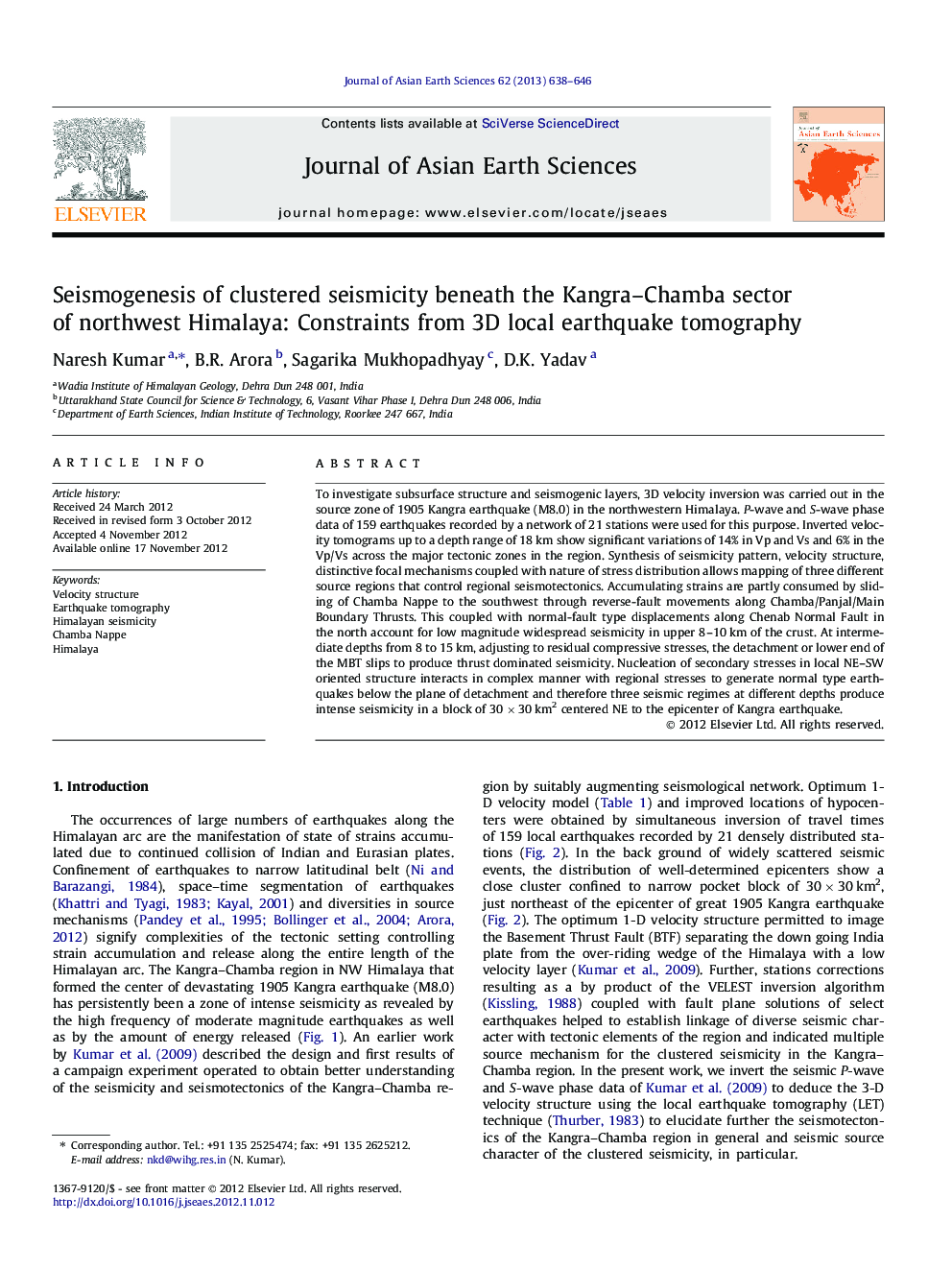| کد مقاله | کد نشریه | سال انتشار | مقاله انگلیسی | نسخه تمام متن |
|---|---|---|---|---|
| 4731304 | 1640403 | 2013 | 9 صفحه PDF | دانلود رایگان |

To investigate subsurface structure and seismogenic layers, 3D velocity inversion was carried out in the source zone of 1905 Kangra earthquake (M8.0) in the northwestern Himalaya. P-wave and S-wave phase data of 159 earthquakes recorded by a network of 21 stations were used for this purpose. Inverted velocity tomograms up to a depth range of 18 km show significant variations of 14% in Vp and Vs and 6% in the Vp/Vs across the major tectonic zones in the region. Synthesis of seismicity pattern, velocity structure, distinctive focal mechanisms coupled with nature of stress distribution allows mapping of three different source regions that control regional seismotectonics. Accumulating strains are partly consumed by sliding of Chamba Nappe to the southwest through reverse-fault movements along Chamba/Panjal/Main Boundary Thrusts. This coupled with normal-fault type displacements along Chenab Normal Fault in the north account for low magnitude widespread seismicity in upper 8–10 km of the crust. At intermediate depths from 8 to 15 km, adjusting to residual compressive stresses, the detachment or lower end of the MBT slips to produce thrust dominated seismicity. Nucleation of secondary stresses in local NE–SW oriented structure interacts in complex manner with regional stresses to generate normal type earthquakes below the plane of detachment and therefore three seismic regimes at different depths produce intense seismicity in a block of 30 × 30 km2 centered NE to the epicenter of Kangra earthquake.
► We evaluated the 3D upper crustal structure of Kangra–Chamba region of NW Himalaya.
► The study region is the epicenter zone of M8.0 devastating Kangra earthquake of 1905.
► Mapping of three different source regions are performed that control regional seismotectonics.
► Strains partitioned differentially at distinct tectonic faults to produce characteristic seismicity.
► In Himalaya local structure play important role in producing local stress concentration.
Journal: Journal of Asian Earth Sciences - Volume 62, 30 January 2013, Pages 638–646